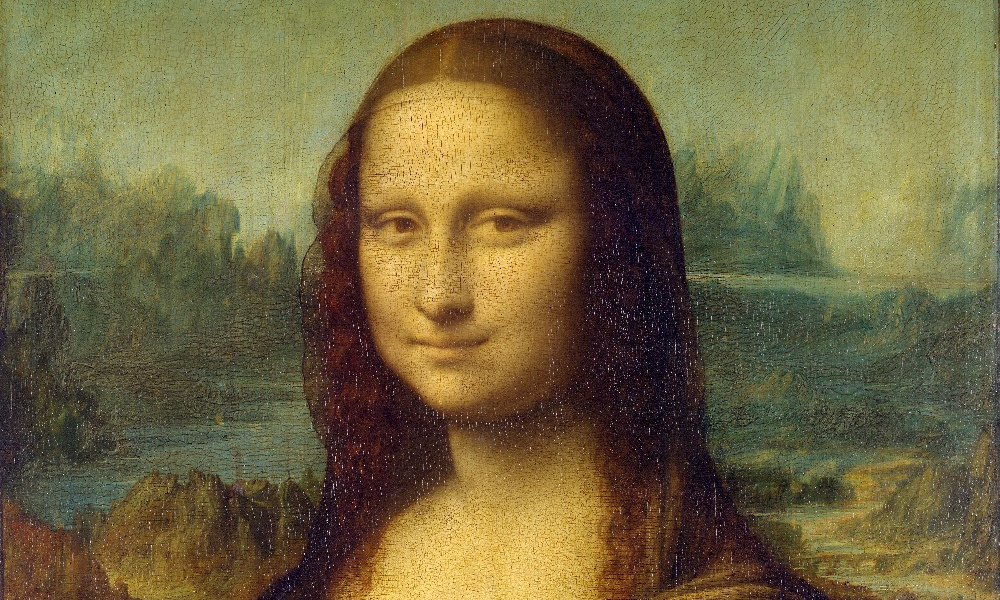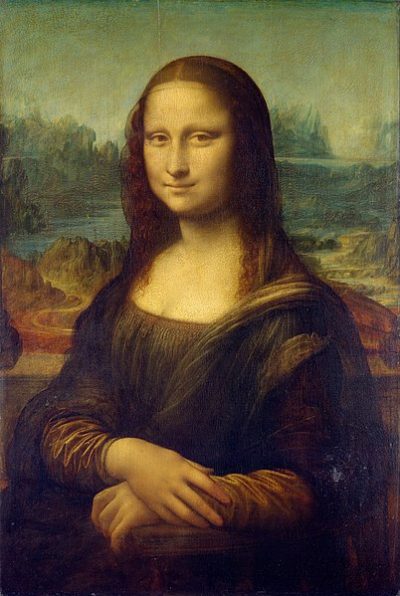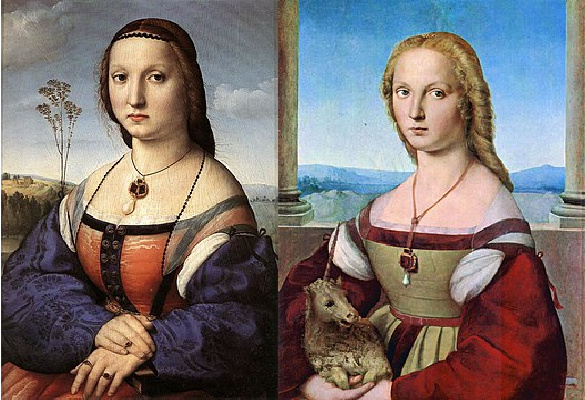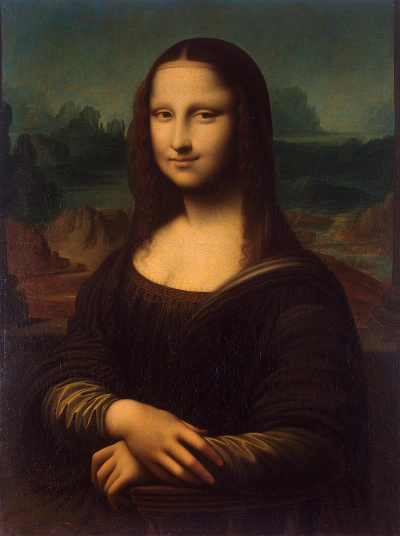7 things you may not know about the Mona Lisa
7 things you may not know about the Mona Lisa
7 things you may not know about the Mona Lisa
-
Hannah
-
Hannah

No doubt you are familiar with the enigmatic smile of the Mona Lisa; after all, it is the most famous painting in the world. But how much do you know about the painting and its history?
1. The identity of the model has been a source of debate
Sigmund Freud, the father of psychoanalysis, believed that the Mona Lisa depicts Leonardo’s mother, Caterina. Others have found similarities between the woman in the painting and the artist himself, and argued that the painting is in fact a self-portrait – or perhaps a depiction of his apprentice, Salaì. Still others have argued that it is a painting of Isabella of Aragon, or the Duchess of Francavilla, or Cecilia Gallerani, or Costanza d’Avalos.
There are compelling arguments that the model was Isabella d’Este, Marchioness of Mantua and a major art patron. Certainly Leonardo had drawn her in portrait several times and letters provide evidence that she wanted him to paint her.
The most popular theory, however, is that the Mona Lisa – known also as La Gioconda in Italian – depicts Lisa del Giocondo, the noblewoman wife of a Florentine silk merchant (La Gioconda, meaning ‘The Happy One’, being a pun on the feminised Giocondo). This theory is based on the writings of Giorgio Vasari, an art historian from the Renaissance period.

The Mona Lisa, the Louvre
2. The painting is unfinished
Unfinished? But surely that can’t be the case – it’s a masterpiece as it stands! Yes, indeed, but Leonardo himself did not consider it complete. He would refine a painting painstakingly over a long period, determined to make the piece as realistic as possible; sometimes he would study a painting for hours and do no more than make a single brushstroke.
Sadly, Leonardo sustained nerve damage in his hand, which made painting very difficult in his final years; it is thought that this is why the Mona Lisa was never, to his mind, finished.
3. The Mona Lisa greatly influenced Renaissance painters
According to art historian Frank Zöllner, the Mona Lisa ‘became the definitive example of the Renaissance portrait’. The three-quarter profile, the imaginary landscape in the background, the aerial perspective, the fashion of the model, the realism – all these, and more, inspired Leonardo’s fellow artists.
The painter Raphael visited Leonardo’s studio more than once and sketched the Mona Lisa; the inspiration he took from the work is clear in Raphael’s 1506 paintings Young Woman with Unicorn and Portrait of Maddalena Doni.

Left: Portrait of Maddalena Doni; right: Young Woman with Unicorn
4. The Mona Lisa has been on display at the Louvre for more than 200 years
Francis I was king of France during the Renaissance and he was a keen patron of the arts; he persuaded Leonardo to come to France and work for him, as ‘the first painter, engineer and architect of the King’. From 1516, Leonardo lived at the Château du Clos Lucé, right next door to the royal Château d’Amboise. He had travelled to France with the Mona Lisa, which he began in around 1503, and continued to work on the painting in between his commissions for the king. This is how the Mona Lisa came to be in France, not Italy, upon Leonardo’s death in 1519. He left the painting to his student and assistant Salaì, who sold it to King Francis I, and thus it became part of the royal collection.
Fast-forward to the French Revolution of 1789 to 1799: after the fall of the monarchy, the royal collection became the property of all, and the Louvre was designated as the Muséum central des arts de la République (Central Museum of the Arts of the Republic). The first museum visitors gazed upon the Mona Lisa in 1797, and since then countless millions have followed suit.
5. There are other Mona Lisas
The Mona Lisa that hangs in the Louvre is the most famous and valuable painting, but it is not the only version; many replicas have been created. Of these, the most well-known are:
The Prado Mona Lisa, in the collection of the Museo del Prado in Madrid, Spain: This is very precious, for it is believed to be a studio copy of the original, painted by a student of Leonardo in his workshop while the master created the Louvre Mona Lisa.

Prado Mona Lisa
The Hermitage Mona Lisa, in the collection of the Hermitage Museum, St Petersburg, Russia: A copy made by an artist during the 16th century; the painter’s identity is unknown.

Hermitage Mona Lisa
The Isleworth Mona Lisa: This painting has provoked the most debate among art historians. Some believe that this is an earlier version of the Mona Lisa painted by Leonardo himself; others disagree. Google ‘Two–Mona Lisa theory’ and you can read compelling cases by both sides of the debate.

Isleworth Mona Lisa
6. The painting only became famous in the last century
The Mona Lisa was not a big draw for visitors to the Louvre for a long time. In the late nineteenth century, intellectuals in France began to consider this an important Renaissance work, but it was generally overlooked by the public – until, in 1911, the painting made the news headlines, when it disappeared.
Who had stolen the painting? The poet Guillaume Apollinaire was arrested. The painter Pablo Picasso was interrogated. Museum administrators were sacked. The French borders were closed. None of this got police any closer to recovering the artwork.
It wasn’t until two years later that the painting resurfaced: the Louvre learned that a man had attempted to sell the Mona Lisa to the Uffizi Gallery in Florence. The thief was arrested: one Vincenzo Peruggia, a glazier who had made the glass case for the painting and thus knew exactly how to open it; he hid in a broom cupboard one night until the museum closed and then took the painting. An Italian, Perugia believed that the painting – of an Italian and by an Italian – belonged in an Italian museum.
The media coverage of the loss of the painting, and its ultimate recovery, gave it a new status in the public consciousness: now, and forevermore, the Mona Lisa was the treasure of the French.
7. It’s the most valuable artwork in the world
We don’t know exactly how much the Mona Lisa is worth, because it’s never been (and never will be) for sale. The highest price ever paid for painting by a long way was 450.3 million US dollars in 2017, for Leonardo’s depiction of Christ in Salvator Mundi. The Mona Lisa would be worth much more: in 1962 the painting was assessed for insurance purposes and valued at 100 million US dollars; adjusting in line with inflation would give a figure in the region of 900 million dollars today.